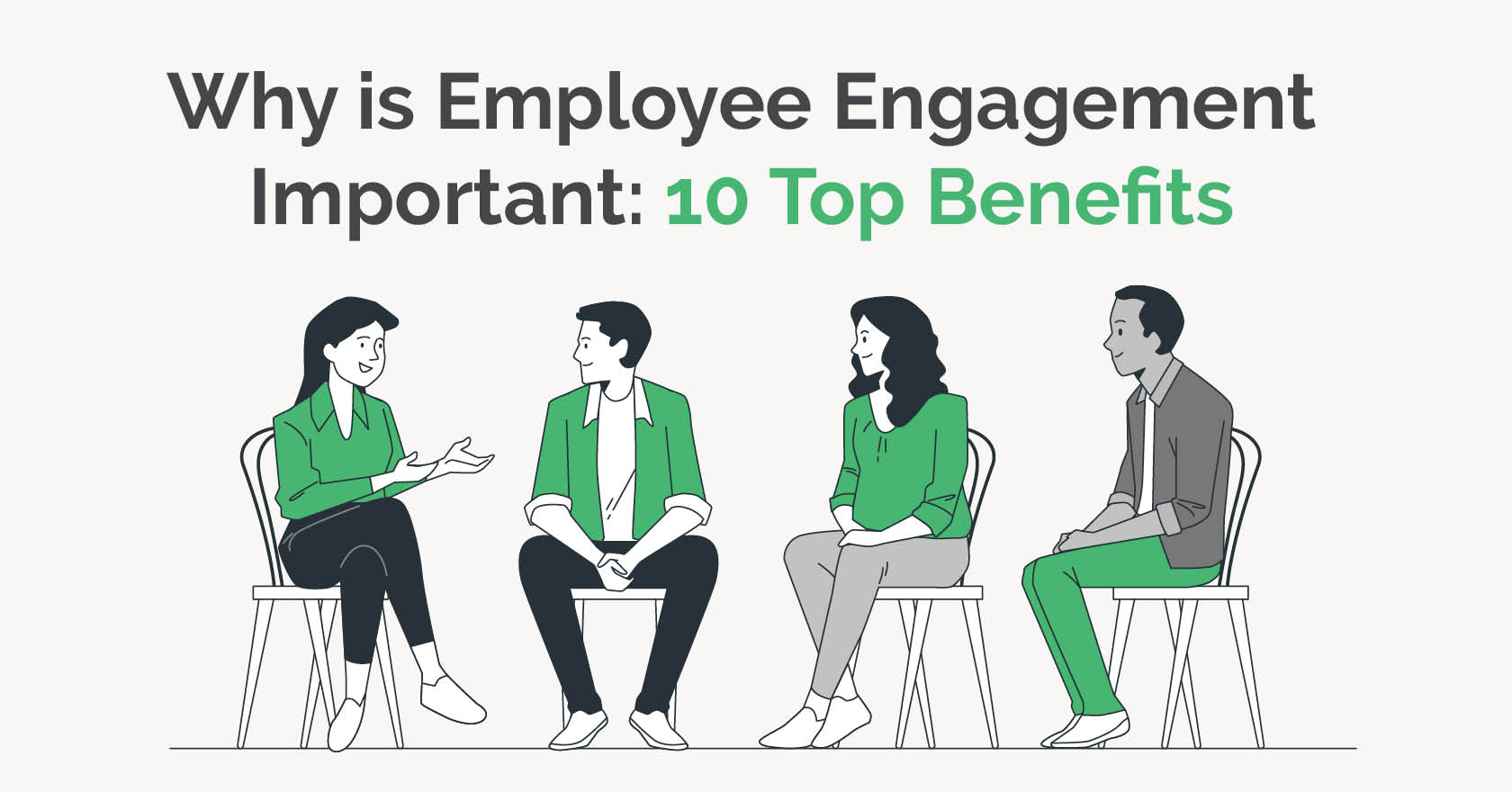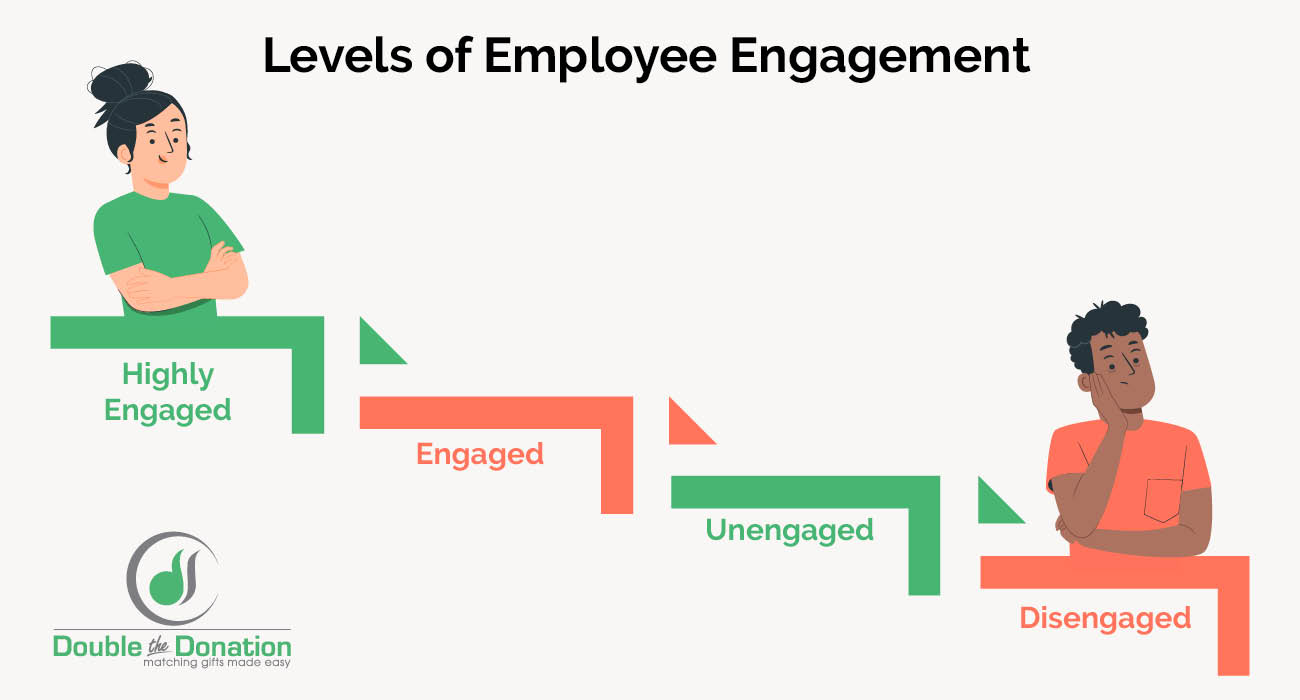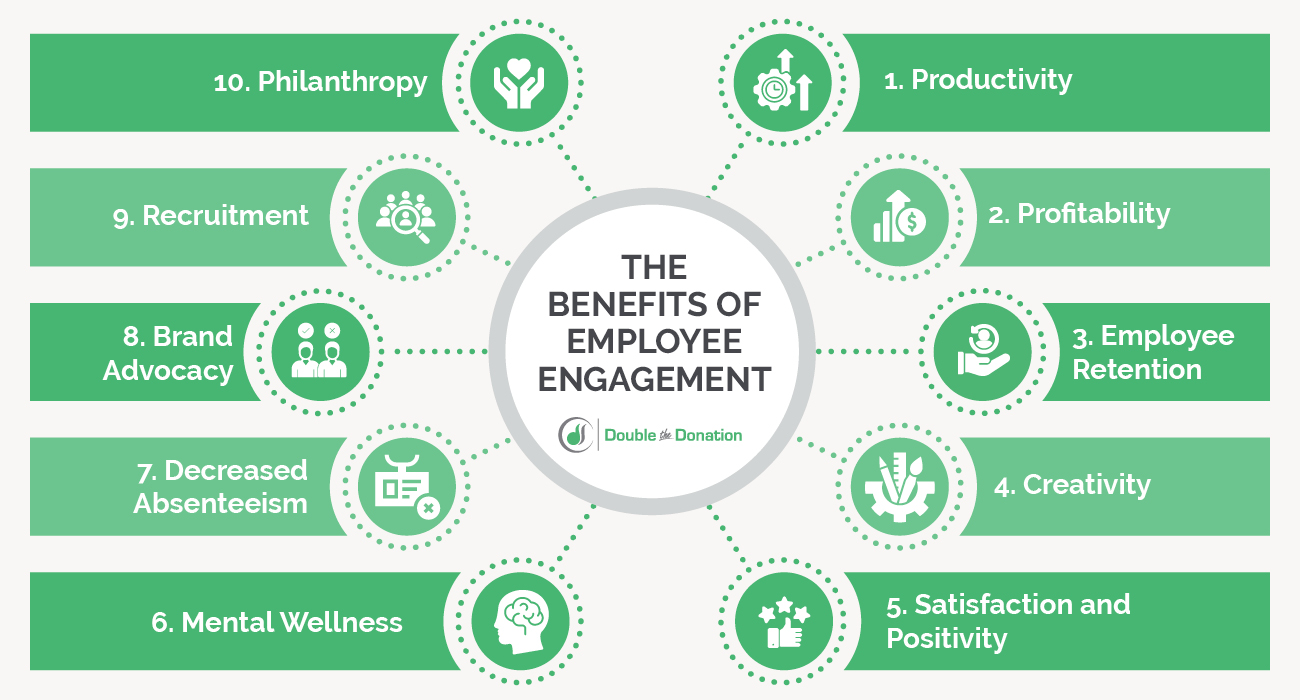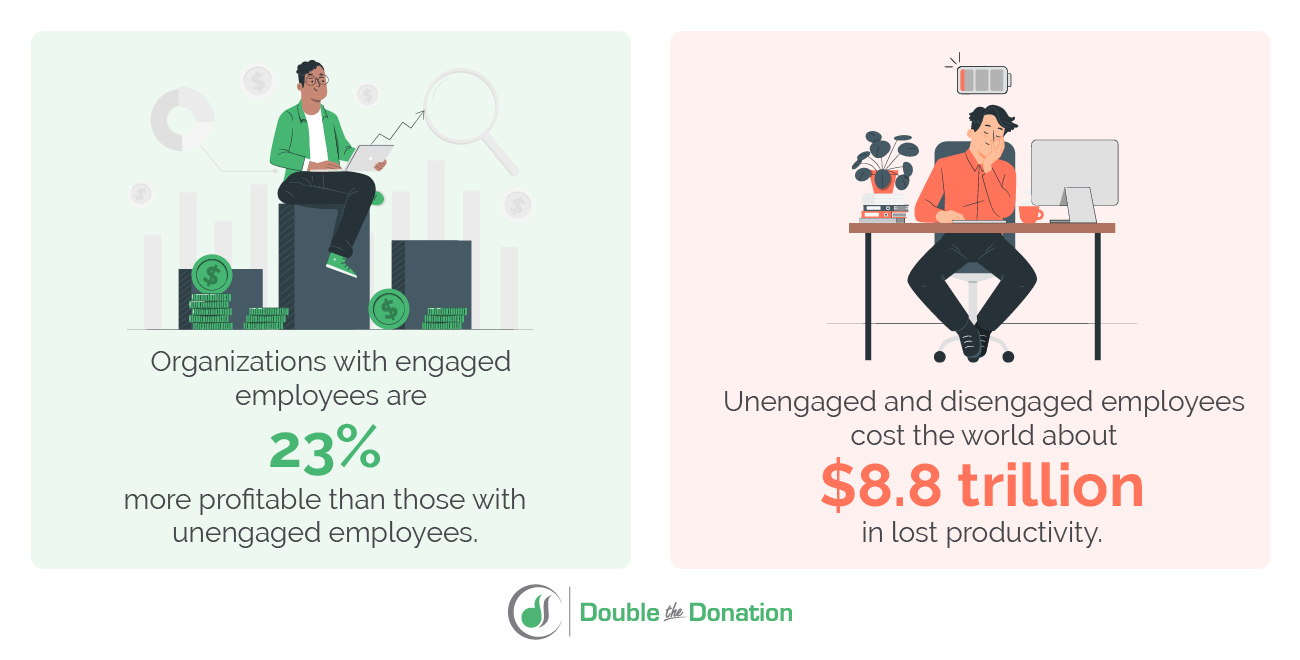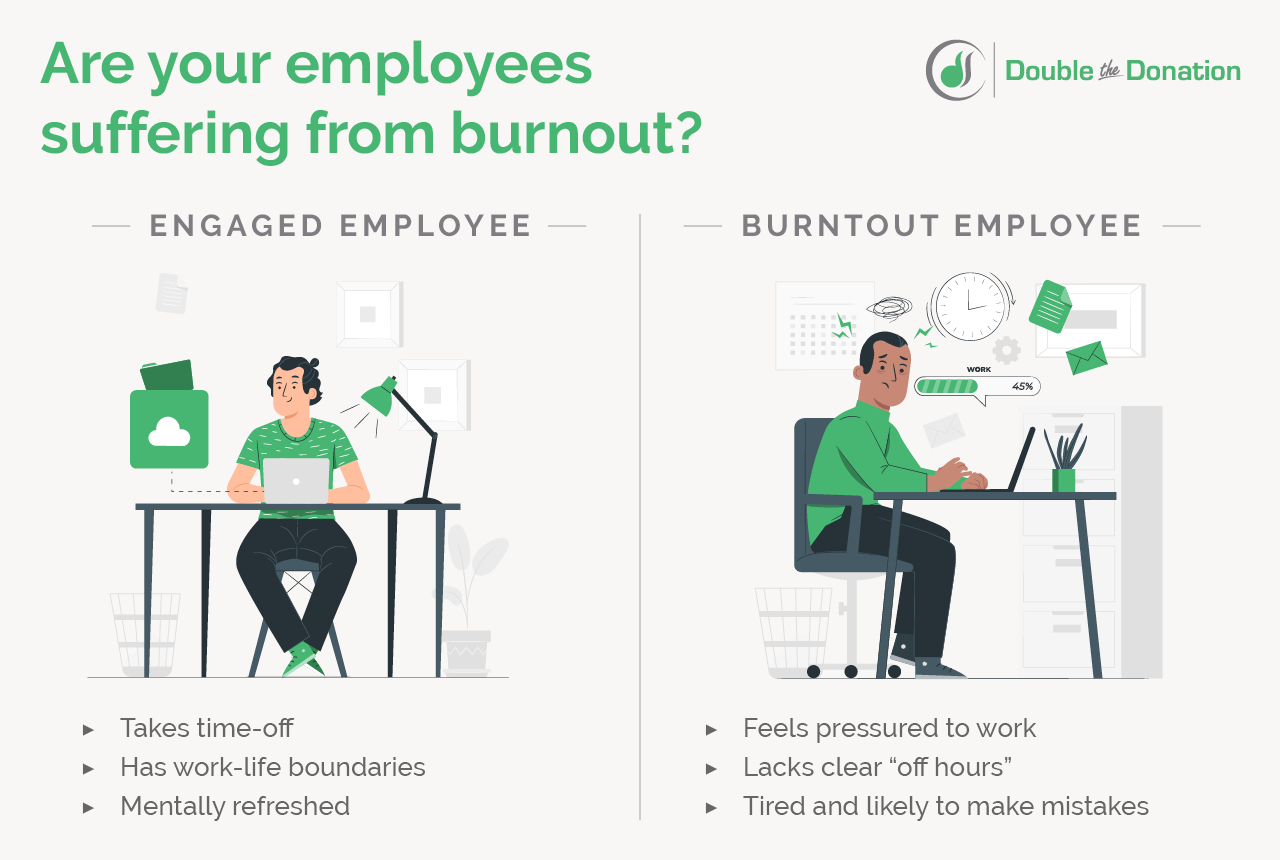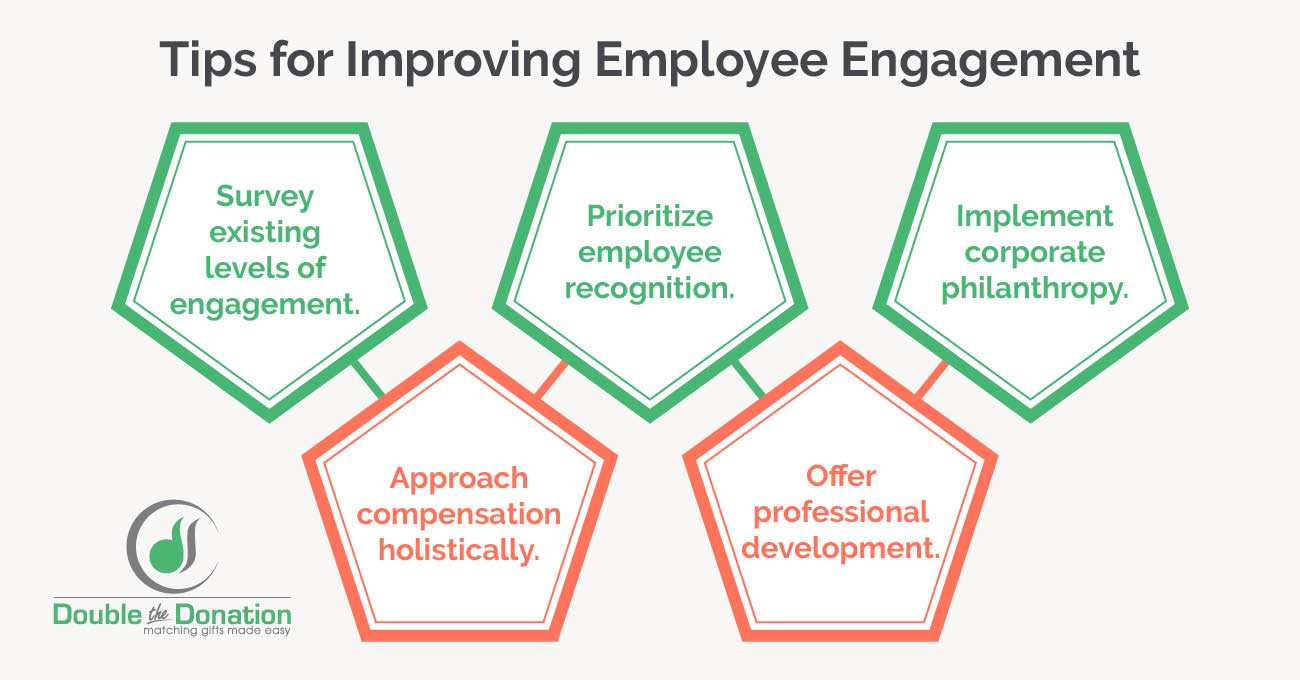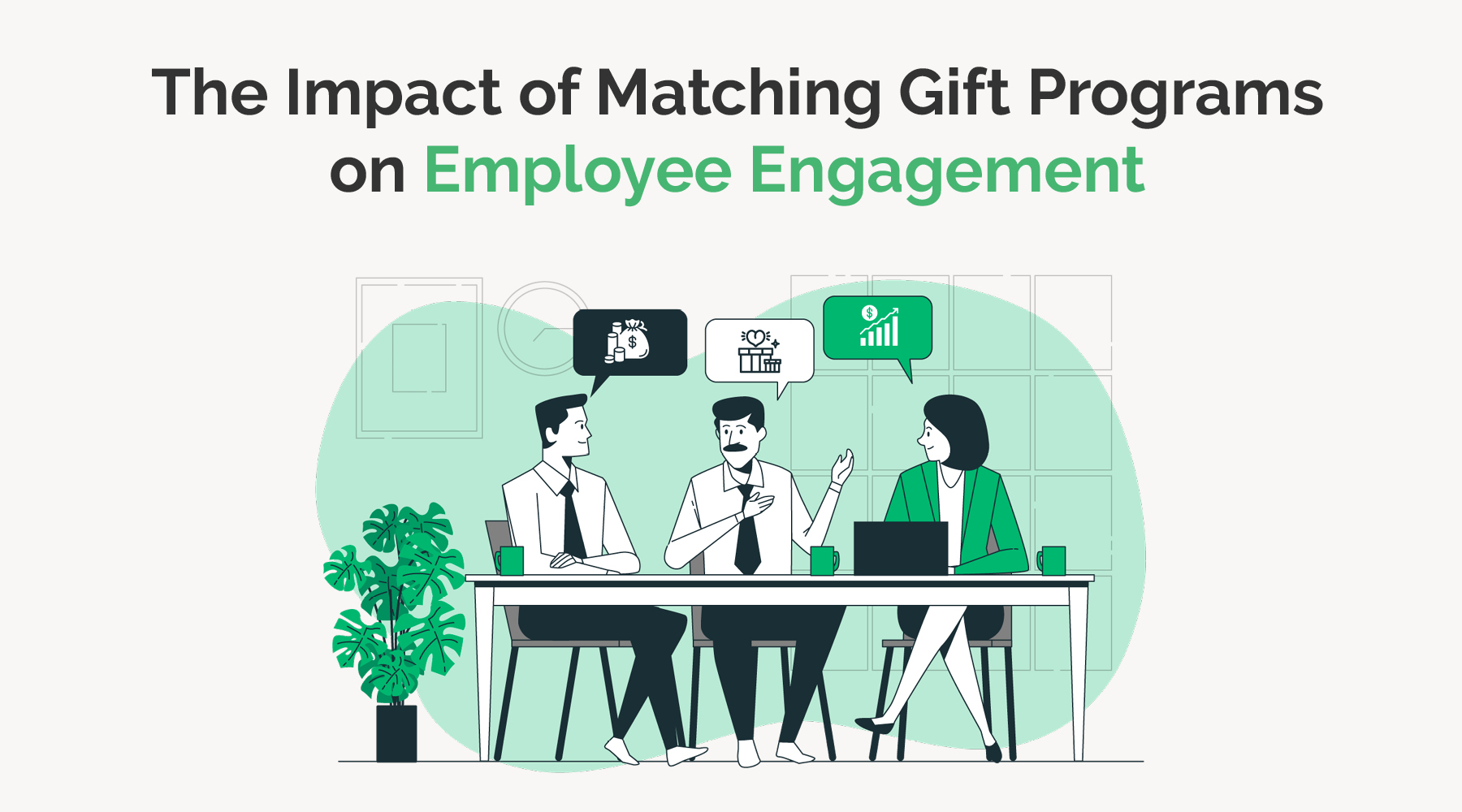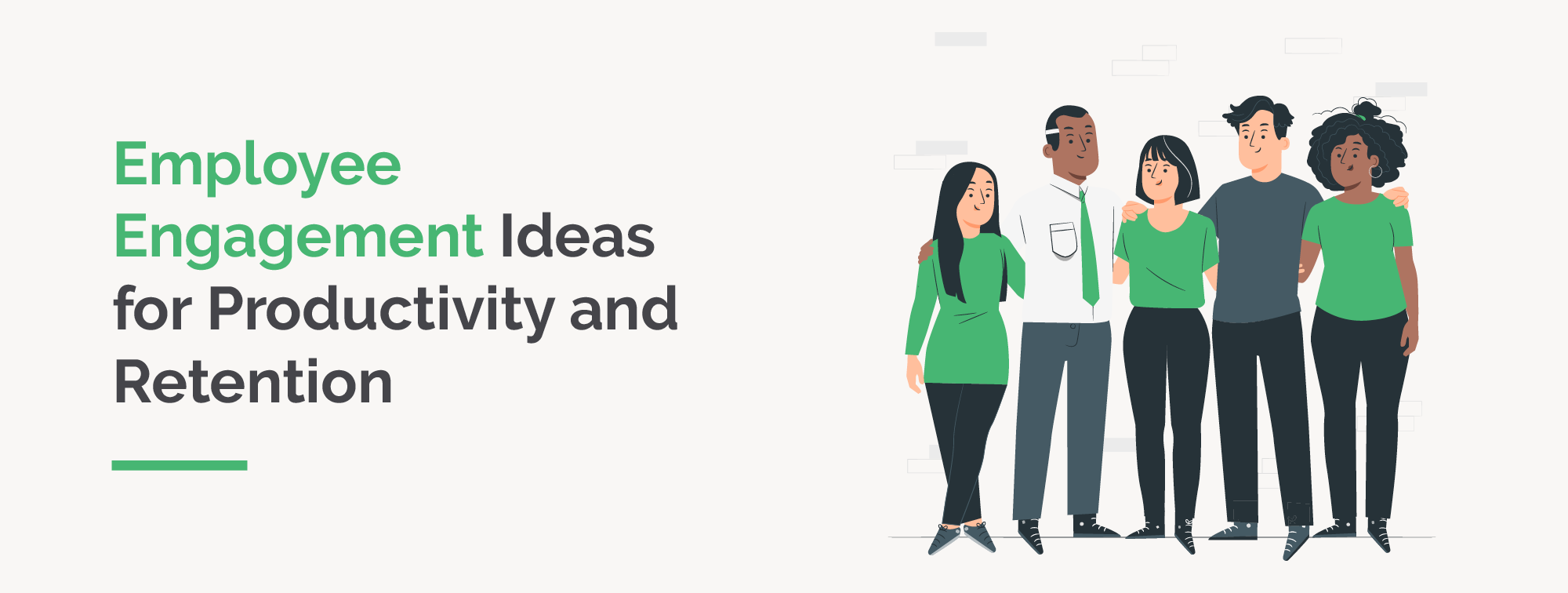Why is Employee Engagement Important: 10 Top Benefits
Author Simon Sinek once said, “When people are financially invested, they want a return. When people are emotionally invested, they want to contribute.” This quote perfectly illustrates how vital it is to engage your employees. By doing so, they will be happier and perform to the best of their abilities.
Unfortunately, employee engagement is sometimes an afterthought in both the for-profit and nonprofit sectors. However, many of these organizations might wonder: why exactly does employee engagement matter?
In this guide, we’ll answer that question by covering the following topics:
- What is employee engagement?
- What are the levels of employee engagement?
- 10 Benefits of Employee Engagement
- 5 Tips for Improving Employee Engagement
By the end of this guide, you’ll see that employee engagement is not only beneficial for your organization in the short term but also necessary for its continued success. So let’s dive in!
What is employee engagement?
In general, employee engagement refers to the level of mental and emotional connection an employee feels toward their work, their team, and their organization. It represents employees’ commitment to staying involved with their organization and helping it achieve its goals.
Keep in mind that employee engagement doesn’t just refer to an employee’s overall enthusiasm—it has to relate to your organization. An individual can have a positive attitude, yet not be very engaged as an employee.
What are the levels of employee engagement?
While it’s possible for all of your employees to have similar engagement levels, it’s more likely that their attitudes are at different locations on the engagement spectrum. Usually, they will fall into one of the following levels of engagement:
- Highly engaged. These employees have very favorable opinions of their work and their organization. They’re passionate, enthusiastic, and more likely to go above and beyond to push forward their company’s goals. They also motivate the employees around them to do their best.
- Engaged. Engaged employees like their work, their team, and their organization. However, they may feel less satisfied about certain aspects of the organization, leading to a slightly lower level of engagement. These individuals may sometimes go above and beyond their call of duty, but for the most part, they will simply fulfill their responsibilities.
- Unengaged. When your employees are unengaged, they feel unattached to their work and their organization. They’re not unhappy, but neither are they happy. They put time into their work, but not their energy or passion. Individuals in this category usually fulfill little more than the bare minimum of their responsibilities.
- Disengaged. Disengaged employees are actively unhappy with their work and their organization. They may even be resentful that their engagement needs aren’t being met. These individuals not only underperform in their roles but may also undermine what their coworkers accomplish.
Having unengaged or disengaged employees is not necessarily indicative of an issue with your company culture—it’s difficult to capture the enthusiasm of everyone who works at your organization, and sometimes engagement is impacted by factors outside of your control, such as major events in your employees’ lives. However, if the majority of your employees fall in the unengaged and disengaged categories, then you may need to re-evaluate your existing employee engagement strategies.
10 Benefits of Employee Engagement
To give you a concrete idea of why employee engagement is important, we’ll cover the top ten benefits of employee engagement.
1. Productivity
According to Gallup’s employee engagement survey, businesses with engaged employees were 18% more productive than companies with unengaged teams. When employees are engaged at work, they feel a connection with the company. They believe the work they’re doing is important and therefore work harder.
By establishing engagement initiatives that improve your employees’ connection to their work, you’ll foster a more positive relationship between your organization and your employees.
2. Profitability
With increased productivity comes increased profitability. When comparing organizations with unengaged versus engaged employees, Gallup found that the latter group was 23% more profitable.
However, not only do unengaged employees not contribute to increasing profitability, but their presence actively increases costs as well. Gallup’s State of the Global Workplace report asserts that unengaged and disengaged employees cost the world about $8.8 trillion in lost productivity, the equivalent of 9% of global GDP.
3. Employee retention
When your team members are engaged and feel appreciated, they will be less inclined to look for other employment opportunities. Fostering a culture of employee engagement can be the key to reducing turnover and boosting retention.
Retention has an impact on your organization’s bottom line, too. The Work Institute estimates that losing an employee costs about $15,000 per employee. This estimated loss includes costs such as unemployment tax, lost business, and interviewing and training replacements.
If employees feel wanted when they go to work each day, they’re likely to form strong connections with the company and other employees. By cultivating and maintaining these relationships, you reduce the risk of employee turnover and the costs associated with it.
4. Creativity
Innovation is the key to growing your business. Engaged employees find creativity to be essential. They thrive on knowing they can find new ways to complete projects and are always looking for fresh takes on old ideas. Plus, if they discover a way to improve your existing processes, they’ll be more likely to advocate for them to improve your organization’s operations as a whole.
On the other hand, disengaged employees rarely produce new solutions or bring fresh ideas to the table simply because their passions don’t lie with their work. They have little interest in contributing to the bigger picture or being creative with their job.
5. Satisfaction and positivity
Remember that boosting engagement isn’t simply about creating more productive employees and increasing profits. Employee engagement is advantageous for both parties and should be treated as a two-way street.
Employees who are engaged at work feel satisfied with their careers and are generally happy individuals. Their positive energy will suffuse your workplace, creating a more positive culture that empowers high performers to create high-quality work.
This is particularly important for remote employees. Since they’re physically distant from their workplace, it’s more difficult for them to form positive relationships and connections with coworkers. Find engagement strategies employees can participate in from home to bring them into your company’s culture.
6. Mental wellness
Stress is an inevitable part of a working professional’s life. However, too much of it can lead to burnout, decreasing productivity, work quality, and eventually profitability. That’s why it’s essential to minimize stress and promote mental wellness for your employees. Additionally, stress is detrimental to both physical health and mental health, making mental wellness even more important.
With the right employee engagement initiatives, your team members will be more self-aware of their stress levels. Plus, they’ll be more likely to seek support from their coworkers and managers if they need it. This leads to a more supportive and positive work environment that everyone benefits from.
7. Decreased absenteeism
Absenteeism in the workplace refers to when employees fail to show up for work or fail to complete their job responsibilities regularly. This should not be confused with taking paid time off or one-off situations such as family emergencies—the key to absenteeism is its frequency and unplanned nature.
According to Gallup’s employee engagement survey, organizations that scored in the lowest quartiles of employee engagement were also 81% more likely to experience employee absenteeism. By focusing on employee engagement, your employees will be more satisfied with their work and less likely to be absent.
8. Brand advocacy
Satisfied employees will help to boost your organization’s reputation—and best of all, it’ll happen without any prompting from you! Happy employees will likely brag about their jobs to customers or tell friends and family how much they enjoy working at your organization. By doing so, they’ll spread good news about your company and improve your overall reputation.
On the other hand, workers who feel disconnected and disengaged are more likely to have negative things to say about your company. If disengaged employees leave or are fired, they may vent their frustrations publicly. Because negative feedback tends to be magnified more than positive, your company’s reputation and credibility could be damaged due to disengaged, disgruntled employees.
You can measure the brand advocacy that employees bring to your organization through an employee net promoter score (eNPS). Ask your employees: “On a scale of 0-10, how likely are you to recommend this company’s products and services to others?” If they answer 9-10, they’re a promoter, and if they answer 0-6, they’re a detractor. Calculate eNS by deducting the percent of detractors from the percent of promoters, and ignore those who score 7-8. This will give you a good idea of how strongly your employees advocate for your organization.
9. Recruitment
Attracting top talent is important to any organization that has open roles or hiring opportunities. This is especially true if the job market is saturated with openings, allowing candidates to more freely pick and choose which organizations they’d like to work for.
When a majority of existing employees at your organization are engaged, they’re more likely to speak positively about their work and the benefits you offer. This helps attract top talent as they’ll have heard about the positive points of your organization through word of mouth.
When potential employees apply to your organization, make sure to leave a positive impression. This could mean responding to their emails in a timely manner, promptly following up about interview times, and sending respectful and appreciative rejection letters.
10. Philanthropy
Corporate citizenship is a growing trend for companies of all sizes and industries. This trend asks organizations to consider themselves as citizens, a singular individual existing in a larger community, and to ask: “Am I a good citizen?” One of the ways businesses and corporations have chosen to give back to their community is through philanthropy.
If corporate citizenship is one of your company’s priorities, try engaging your employees with it. Employees want to know that the company they work for cares about the community. If your company offers volunteer grants or matching gifts, engaged employees are likely to take advantage of these opportunities to donate their time and money toward worthy causes. This helps your company be a better corporate citizen in your community.
5 Tips for Improving Employee Engagement
Now that you know the benefits of employee engagement, let’s move on to actionable advice for improving engagement at your organization.
1. Survey existing levels of employee engagement.
The first step to establishing employee engagement initiatives is to assess the existing engagement levels at your organization. If you already have established programs and want to examine their efficacy, this is also a great place to start.
It’s difficult to approach employee engagement quantitatively, so lean into qualitative data collection by sending out a survey. Here are a few examples of questions you can include in your survey:
- How satisfied are you with your work?
- How satisfied are you with the direction [Organization Name] is taking?
- Do you feel your opinions and ideas are valued by your manager and leadership?
- How satisfied are you with your work-life balance?
- What do you think could be improved about your work?
- What challenges do you face in your day-to-day tasks?
- How likely are you to recommend [Organization Name] as a place of work to friends or family?
Collect the results of the survey and consolidate the information. Review the general level of employee engagement, but also examine the long-form answers on the survey. If there are any common challenges that your employees face, endeavor to address them to create a better work experience.
Upon review, if you find that the majority of your employees are unsatisfied with their work and feeling unengaged, then you may need to make operational changes to improve employee engagement. However, even if most of your employees are engaged, you should still do your due diligence and review how you can improve existing engagement. For example, if multiple employees express interest in a structured recognition program, look into starting one.
2. Approach compensation holistically.
To keep your employees engaged, re-examine the root of their work: compensation. With the proper compensation, employees will be happy to work and perform at their best.
Take a total rewards philosophy to compensation, where you characterize compensation as either direct or indirect. Direct compensation is financial and can include salary, bonuses, and overtime pay. Indirect compensation, on the other hand, encompasses the non-financial ways an employer gives back to their employees.
Support employee engagement with the following methods of indirect compensation:
- Paid time off. Outperform the competition by offering more time off than other businesses in your sector. By allowing your employees to take breaks, they’ll be able to rest and recharge, ensuring they come back refreshed and ready to work.
- Workplace giving. More than ever, employees expect their employers to give back to the community and support social good. Support this desire by allowing them to decide which causes receive your funds through workplace giving programs and campaigns. Plus, word of your philanthropy will result in an improved reputation for your company.
- Wellness programs. Help your employees stay physically and mentally healthy by incorporating wellness programs into their compensation. This can range from a monthly gym membership stipend to discounted massages to catered healthy work lunches.
By re-evaluating compensation for your employees and taking a total rewards approach, you’ll show team members that their happiness and well-being matter to you. When employees’ well-being and financial needs are secure, they’ll have the mental space to focus on their work and engage with your organization.
3. Prioritize employee recognition.
Everyone, especially high performers, wants to be complimented on their good work. If they don’t receive the praise or recognition they’re expecting, they may feel overlooked or disregarded by their managers and leadership. This can lead to resentment and disengaged employees.
To avoid this, implement employee recognition programs such as the following:
- Employee of the month. Every month, choose a top-performing employee to feature in your company newsletter. You can also give them a trophy or a certificate for the employee wall of fame so that they have a tangible reminder of their accomplishments.
- Social media shoutouts. Don’t be afraid of telling your customers and your greater community about your high-performing workers! Shoutout your employees on social media for a job well done. This can be done as part of your employee of the month program or as a way to celebrate a particular achievement.
- Employee Appreciation Day. National Employee Appreciation Day falls on the first Friday of March every year. Show your appreciation for all your employees by hosting an office party on this day with catered food and drinks. Go above and beyond by preparing small gifts for all attendees.
- Peer-to-peer recognition. Although leadership appreciation may be highly impactful, your company’s leaders aren’t tapped into the day-to-day responsibilities of all employees. That’s why peer-to-peer recognition is so important for ensuring all your employees receive the appreciation they deserve. Plus, it’ll create a more positive work environment that encourages engagement.
Not only does proper employee recognition prevent resentment, but it can support your goal of creating more engaged and productive employees. By recognizing high performance, you incentivize employees to do their best work. And this, in turn, will improve the profitability of your business.
4. Offer professional development opportunities.
With about 76% of employees looking for opportunities to expand their careers, professional development is an essential offering. Plus, 58% of employees say professional development contributes to their job satisfaction.
You may be thinking: If I offer my employees more training, then they’ll leave for better employment opportunities after the training is complete.
Studies have found that’s not true. 94% of employees won’t quit if they’re offered training and development opportunities, and retention rates are 34% higher among organizations that offer development programs.
To reap these benefits, offer professional development through mentorship programs, training and resource databases, networking opportunities, and more. You might even pay for employees to attend industry-related conferences to broaden their horizons and expand their knowledge about cutting-edge industry innovations.
5. Implement corporate philanthropy initiatives.
54% of employees in the United States said that they would be willing to take a pay cut to work at a company that shares their values. And 56% of them say they wouldn’t even consider a job at a company that has values they disagree with.
A value that’s increasingly significant to employees is philanthropy. In fact, 71% of employees indicate that it’s very important to work at a company that partakes in philanthropy. Show employees that you share their values by investing in corporate giving initiatives.
Common workplace giving programs that you can implement include:
- Matching gifts
- Volunteer grants
- Employee grant stipends
- In-kind donations
When developing your company’s charitable giving policy, prioritize convenience for employees. To facilitate a streamlined corporate philanthropy process, consider investing in workplace giving software. The right platform will allow you to:
- Manage employee donations and matching gift requests.
- Track employee volunteer hours and volunteer grant requests.
- Arrange automatic payroll deductions so employees can donate a portion of their paycheck to a nonprofit of their choice.
By creating an atmosphere of corporate philanthropy, you’ll not only help employees contribute to nonprofit organizations but also help them feel more engaged and fulfilled at work. And when it’s easy for them to take part in workplace giving, you’ll get more out of the programs you’ve already invested in.
Additional Resources
By prioritizing employee engagement, you’ll not only boost productivity and your company’s profits but also help your employees reach their full potential and look forward to coming to work each day.
Looking for more engagement strategies? Check out the resources below:
- From Disengaged to Inspired: A Guide to Employee Engagement. Want to learn more about employee engagement? Check out this essential guide to get you started!
- What is Corporate Social Responsibility? Guide & Examples. Discover the basics of giving back to your community and improving society with corporate social responsibility in this guide.
- Why Workplace Giving Matters for Nonprofits + Companies. Interested in exploring workplace giving to improve employee engagement? Start with the basics in this guide!
